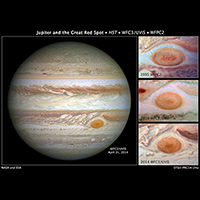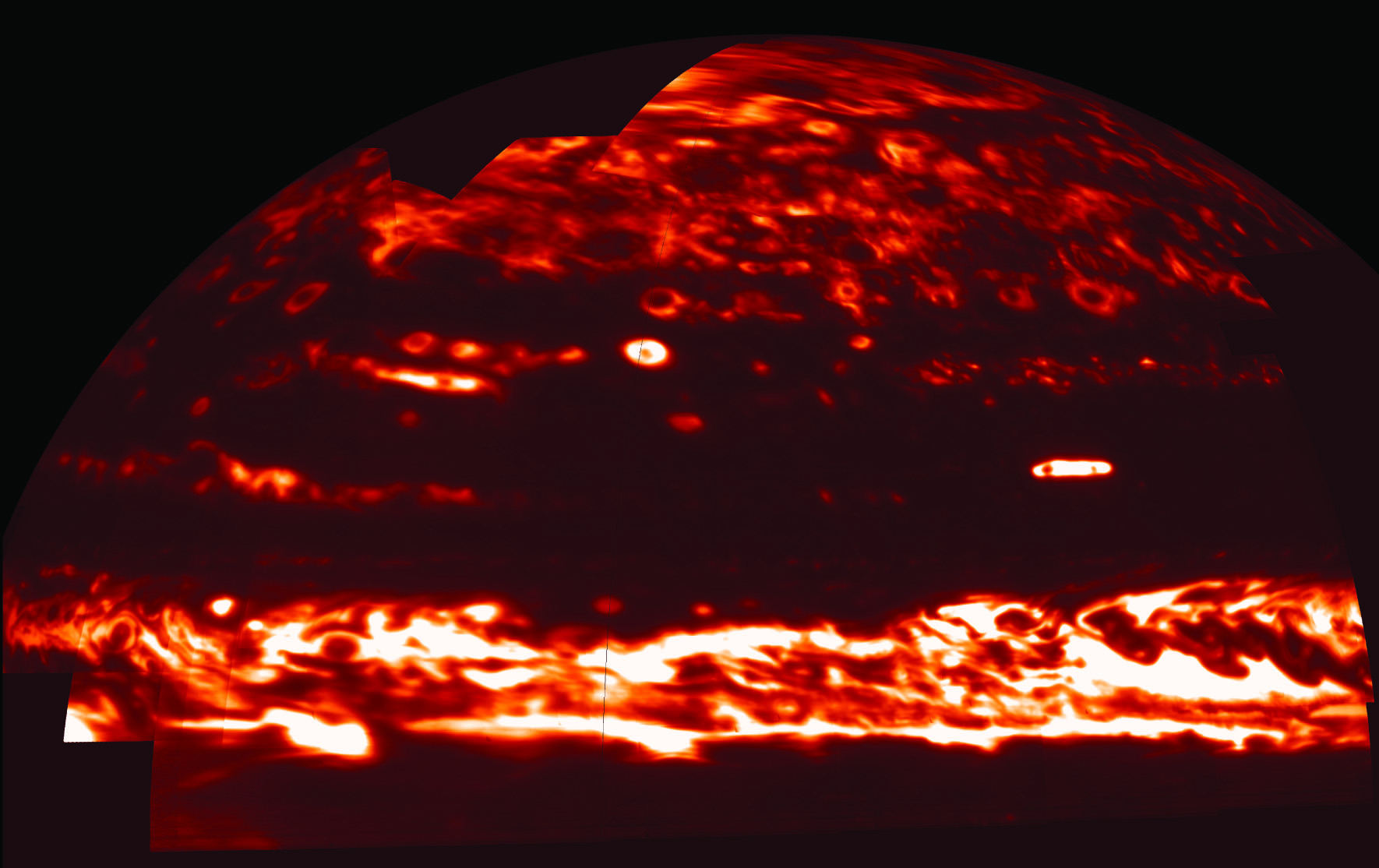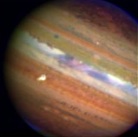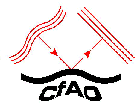|

|
Jupiter's deep atmosphere from 5-micron spectroscopy
We are using 5-micron spectroscopy to complement radio observations of Jupiter's deep atmosphere.
Click on the thumbnail for more images and information.
|
|

|
Peering through Jupiter's clouds:A radio image of Jupiter from the VLA at three wavelengths: 2 cm in blue, 3 cm in gold, and 6 cm in red (click to
enlarge image). A uniform disk has been subtracted to better show the fine banded structure on the planet. The pink glow surrounding the planet is synchrotron radiation produced by spiraling electrons trapped in Jupiter's magnetic field. Banded details on the planet's disk probe depths of 30-90 km below the clouds. This image is averaged from 10 hours of VLA data, so any longitudinal structure is smeared by the planet's rotation. (CREDITS: Imke de Pater, Michael H. Wong (UC Berkeley), Robert J. Sault (Univ. Melbourne))
|
|

|
Jupiter's Great Red Spot is shrinking: Amateur observations of
Jupiter over the past few decades have seen a steady decrease in
its size. This has been confirmed with HST, and the spot has
shrunk even faster between 2012 and 2014. Click on the thumbnail for more images and information.
|
|

|
Vortices on Jupiter: Observations of Jupiter with Keck
and HST have been used to derive the vertical structure of and
secondary circulation in jovian vortices, a necessary piece of
information to ultimately explain the red color in the annular ring
inside Jupiter's Oval BA. Click on the thumbnail for more images and information.
|
|

|
SEB Revival: Observations of Jupiter with Keck and Gemini in November 2009 showing an Outbreak in the SEB. Click on the thumbnail for more images and information.
|
|

|
2009 Impact on Jupiter: HST, Keck AO and Gemini observations of the 2009 Impact on Jupiter (July 2009). Click on the thumbnail for more images and information.
|
|

|
HST and Keck AO observations of Jupiter in May 2008: upheaval continues. Click on the thumbnail for more images and information.
|
|

|
Keck AO observations of Jupiter's Great Red Spot and Oval BA. Click on the thumbnail for more images and information.
|
|

|
HST observations of Jupiter's Great Red Spot and Oval BA were carried out in April 2006. Click on the thumbnail for more images and information.
|

|
Oval BA turned red in December 2005, as announced by Christopher Go. Click on the thumbnail for more images and information.
|
|
Adaptive Optics (AO)

|
As members of the Center for Adaptive
Optics (CfAO) we use the adaptive optics systems at the Lick and Keck
observatories. Turbulence in our atmosphere limits the seeing of telecopes
to approximately 1 arcsecond, while the diffraction limit of a telescope
is approximately equal to the ratio of the wavelength and the diameter
of the mirror. Adaptive
Optics page link
|

